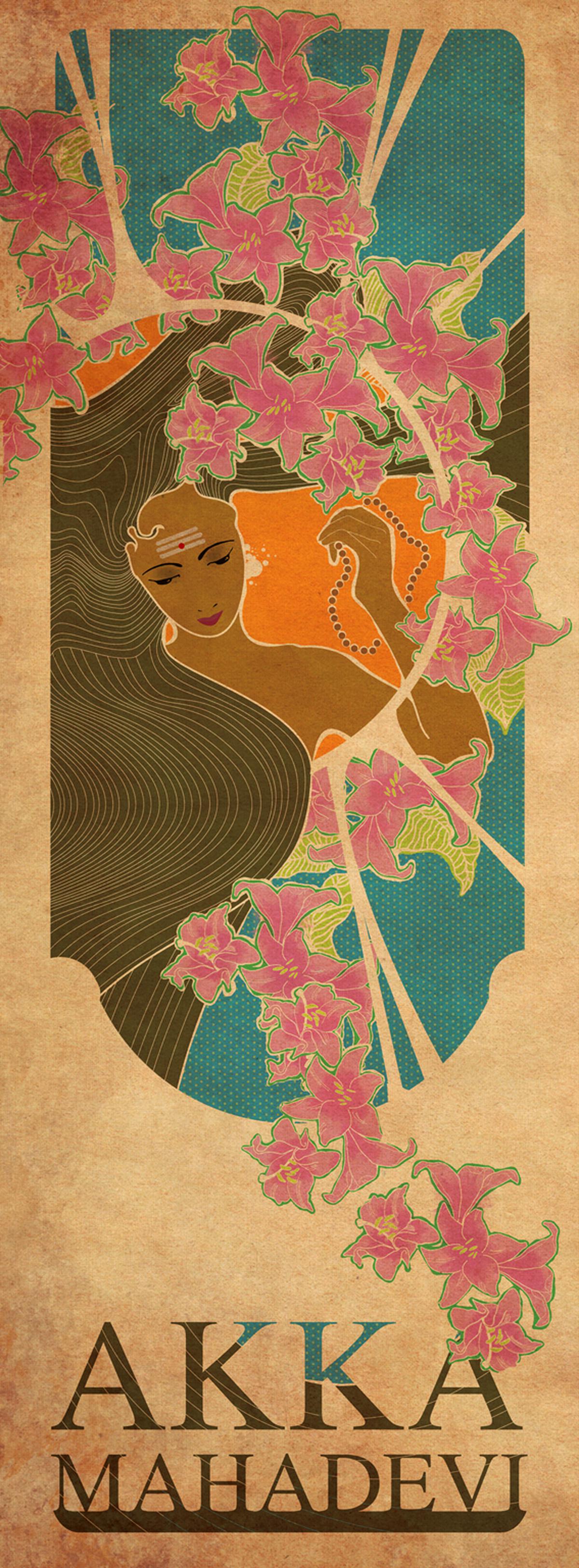Smruthi Gargi Eswar’s ‘Devi is in the Detail’ at Hyderabad’s Shrishti Art Gallery is a contemporary portrayal of goddesses
Devi is in The Detail, a digital art series by Smruthi Gargi Eswar, commemorates 20 years of Hyderabad’s Shrishti Art Gallery
Devi is in The Detail, a digital art series by Smruthi Gargi Eswar, commemorates 20 years of Hyderabad’s Shrishti Art Gallery
An exhibition showcasing Smruthi Gargi Eswar’s artworks to commemorate 20 years of Hyderabad’s Shrishti Art Gallery is titled Devi is in The Detail. The title could not have been more apt; the digital artworks have the potential to make visitors take a fresh look at the way a goddess or Devi is often portrayed.
The Bengaluru-based artist explains how women are socially conditioned and come under stress to be “Devi-like”, but what makes the goddesses in her art relatable is a more fluid representation, similar to normal women. This fluid depiction does not dilute the idea of a goddess; instead, it brings to the fore a lesser-explored facet.
Instead of an image of goddess Saraswathy seated with her veena and blessing her devotees, as seen on calendars and framed images in puja rooms, we see her in an informal mode, as though she is enjoying some time off in the forest.
Smruthi was always familiar with mythological stories. She had the basic idea of stories associated with Durga, Saraswathi and Lakshmi and their raw strength and energy. Having grown up in South India, she says, “Dravidian Hindu mythology is different from the pan-Indian approach we see today. Since a part of my family is from rural India, I was also exposed to the concept of village goddesses. When I began a series on goddesses nearly a decade ago, I wanted to be better informed and read up about the goddesses. I realised that stories of gods and goddesses have been retold many times and there are different versions to each story. That made it even more interesting.”

Akka Mahadevi by Smruti Gargi Eswar
| Photo Credit: SPECIAL ARRANGEMENT
The rural dieties
One of the artworks titled Gramadevi is a representation of village goddesses. There are several names given to these goddesses in villages across India. The rural deities are worshipped differently by different communities. Smruthi tries to find a commonality among the different versions, taking a few characteristic traits. The local deity is often identified by the image of the head just outside the village, under a tree. Legends have it that feasts are cooked to appease her wrath after the village and the nearby areas bear the brunt of forest fires. “There was a time when these deities were tended to by women of the area and not by priests,” says Smruthi.
Each of her artworks — depicting Gauri, Prakriti, Matangi, among others — narrate a story. Parvati covering her face with a lotus harks back to the story of the Lingam and the Yoni. Elsewhere we learn about Tara, the goddess for travellers, and Akka Mahadevi, the 12th-century mystic who was devoted to Lord Shiva. The artist’s portrayal of Ganga and Arthanarishwari are also examples of an exploration of multiplicity.
Some of these artworks are a part of Smruthi’s continuing series Sister Misfortune that began a decade ago when she started exploring and depicting goddesses who are not revered or dismissed as ‘alakshmi’, the opposite of Lakshmi.
Smruthi studied fine arts at the Baroda Faculty of Fine Arts and Chitrakala Parishad. Her interest in art, though, emerged when she was a student at The Valley School, KFI. She then worked as a graphic artist for a few years before returning to fine arts.
The art of letting go
She preferred the digital art form for her series on goddesses. The vibrant colours and a contemporary calendar mood was accentuated by going digital. She adds, “I found it elitist that a painting will be owned by one person. Digital art is democratisation of that process.”
Smruthi Gargi Eswar
| Photo Credit: Special Arrangement
Ensuring that the value of her art does not get diluted, she makes limited edition copies. “I make 10 copies and then delete the source file,” she says, referring to how she took a cue from early photographers and lithographers who destroyed the negatives and originals so that the imagery is not replicated over and over.
Destroying the original file was hurtful initially, she admits and adds that with time, she found it cathartic to let go. Once the high-resolution source file is destroyed, she is only left with a few low resolution images that she uses for tarot cards.
(Devi is in the Detail is on view at Shrishti Art Gallery, Jubilee Hills, Hyderabad, till April 12)
For all the latest Entertainment News Click Here
For the latest news and updates, follow us on Google News.
